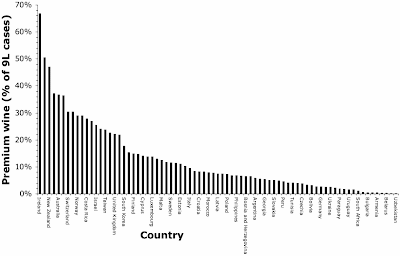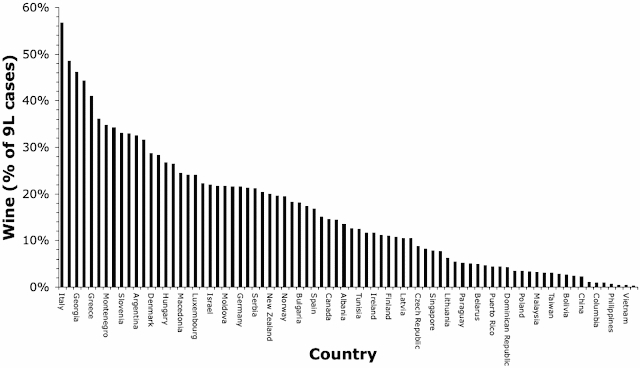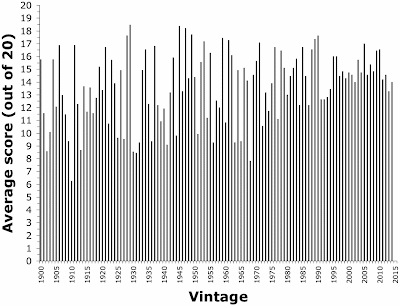In the marketing world there is a clear distinction between “buying” and “selling”. “Buying” means that the customer comes to the retailer in search of something specific, and will make a purchase if the item is available at the right price. “Selling” means persuading the customer to purchase something they had not yet realized they wanted.
Most wine is sold, not bought. This post looks at how this happens in the modern world.
There is plenty of wine that is bought, of course, mostly by people with a specific wine interest. They hear about a particular wine, and they go in search of it, or they make direct purchases from wineries, for example, after tasting. Indeed,
it seems that: “the online world has been a godsend for boutique wineries, many of which have had their market access stymied by the increased dominance of supermarkets in the liquor retailing scene.”
Selling
But most wine is not bought in this targeted way. This applies to both online and bricks-and-mortar retailing. Most casual drinkers start the purchasing process with little or no specific idea in mind, and it is up to the retailer to sell them something, lest the customer moves on. This should preferably be something that the customer will like, and which is also financially remunerative for the retailer. The latter point is of particular importance, because selling loss-leaders is a no-brainer, and selling high-volume items is a little-brainer — the “art of selling” refers to the remainder of the inventory.
The tricky part is therefore the point about the customers purchasing something they will like. How on earth do we do this? Let's put aside the idea of prior marketing for the moment, which is a whole other business (“Sales is fishing with a hook; marketing is fishing with a net.”) Supermarkets often work in this way.
In the bricks-and-mortar world, one traditional selling method is to have an actual human being talk directly to the customer. In some mysterious way, the seller persuades the customer to leave the store with a bottle of wine of the seller's choice. This may or may not work, depending on how well the seller judges the tastes of the purchaser. It can fail for any number of reasons, including misunderstandings due to words, genetic differences in wine tasting, and psychological factors like social pressure (
Wine has a problem because it is “sold.” Badly. Or not at all). Moreover, a large proportion of wine is purchased in supermarkets and grocery stores, where there is no dedicated seller. This has been referred to as the
Vino Casino, because getting a suitable wine is then a lot like gambling (“you pays your money and you takes your chances”).
In the online world, on the other hand, the method that has become best entrenched is to have a computerized recommendation system. The customer is shown a series of items that the computer has decided might be of interest, so that the computer system effectively becomes the seller. Instead of an interaction between two people (purchaser and seller), in this case there is little or no interaction at all — the seller presents, and the targeted purchaser reacts.
This general idea seems not to work all that well, currently, often because the recommendations are not relevant most of the time (eg. 90%). However, this does not mean that the online stores do not rely on recommendations for a large part of their revenue — see
The promise (and pitfalls) of current recommendation engines.
Online recommendations
How does the computer do this recommending? There seem to be five general ways that allow a computerized recommendation system to function.
The
first way is based on “trending”. The idea is to identify things that have recently become popular, and then recommend them to a broader set of customers. That is, the computer system tries to detect things where the attention is accelerating, as opposed to sustained signals in the world of consumers. Twitter, in particular, uses this idea.
The problem with this approach is that it filters out ongoing trends, and focuses instead on the novel and sensational. This has always been the approach of the traditional media, of course — 500 people killed in 500 car crashes is not “news” but a single plane crash gets front-page headlines. This is hardly a useful way to recommend anything sustainable. It is also very easy to “game” such a system, simply by
generating a little ersatz velocity.
The
second way to recommend is via what is called “profiling”. This means that the fundamental characteristics of the items being sold are determined, usually by an expert. For example, the
Music Genome Project tried this approach, in which 450 distinct musical characteristics were coded for each of more than 1 million pieces of music. Recommendations could then be made for new customers, who first specified some pieces of music that they like, and were then told about other pieces of music that have similar musical characteristics.
The first version of this idea for recommending wine was apparently SmartTaste, based on the organoleptic qualities of a set of wines; and this approach was also adopted by the likes of SavvyTaste. Neither system prospered,
apparently due to inconsistencies between people regarding the interpretation of the sensorial profiles.
The
third approach is therefore to focus on people, using what is called “collaborative filtering”. Each person in the customer database is categorized based on their likes and dislikes. This happens whenever they rate any of the items in the database — they "like" items they rate highly and "dislike" ones they rate poorly. In order to make a recommendation, the new customer is matched to similar people from the database, based on their apparent likes, and recommendations are made based on those similar people's ratings.
Obviously, this approach does tend to promote the idea of stereotypes (eg. recommending wine to females and beer to males), which can create a feedback cycle that entrenches the stereotypes. But the
practical problem here is that most of the items have never been rated by most of the people, in spite of the fact that the databases used by the likes of Amazon and Netflix have billions of ratings. This means that the similarity calculations need to be constantly updated as new ratings come in, at the rate of millions per day. This progressively becomes unworkable, as in practice the calculations need to be repeated for each new customer.
The
fourth approach is therefore to focus on the items, instead of the people. Each item in the database is categorized based on which people like or dislike it, based on their ratings, and/or which items are purchased together (eg. a set of wine glasses plus a separate decanter). In order to make a recommendation, items that each new customer looks at are matched to other items in the database, and recommendations are made based on how similar those items are, in terms of who likes them or has purchased them.
This is better than option 3, because once there are sufficient ratings for any given item the similarity calculations will stabilize — the calculations do not need to be updated anywhere near as often. This is the basic approach used by most of the recommendation engines, such as those used by
Amazon and Netflix.
The failure of this fourth approach comes from the assumption that because one person likes an item that someone else will also like it, in some consistent manner. Take a basic marriage as a counter-example. Mathematically, such a situation might be ⅓ ⅓ ⅓ — one-third of the time the husband and wife like the same thing, one-third of the time the husband goes long with the wife's choice, and one-third of the time the wife goes long with the husband's choice. This will work in practice, because both the husband and the wife are getting what they want two-thirds of the time. However, if an outsider sees the wife and husband together doing something, which of the three possibilities is it? There is only a one-third chance that my wife will like something that I like, in spite of the fact that she is getting what she likes two-thirds of the time. This is not a reliable basis for a recommendation system.
The
fifth type of recommendation system therefore gets personal, by focusing on individuals rather than stereotypes (as in the third approach). In effect, what is needed for consistent wine recommendations is to find someone whose wine tastes are the same as your own, and to then follow their advice. This seems quite obvious, and it has been said many times before about the only possible usefulness of wine critics and commentators — for practical purposes, each of them is only as useful as the similarity of their tastes to your own. Unfortunately, how to implement this idea in an automated (computer) system is not necessarily obvious. Both the
Tribes and Clans wine-recommendation systems claim to do this; but their inner workings are still subject to patent-application non-disclosure.
Conclusion
Computer recommendation systems are not likely to go away, in the wine industry or anywhere else, because they seem to be the only way to sell things to non-buyers online. We should not, however, conclude from this that they are currently in any way optimal for their intended purpose: which is consistently recommending something that the customer will like. While we wait for improvement, we will need to continue to take their recommendations with a grain of salt.










